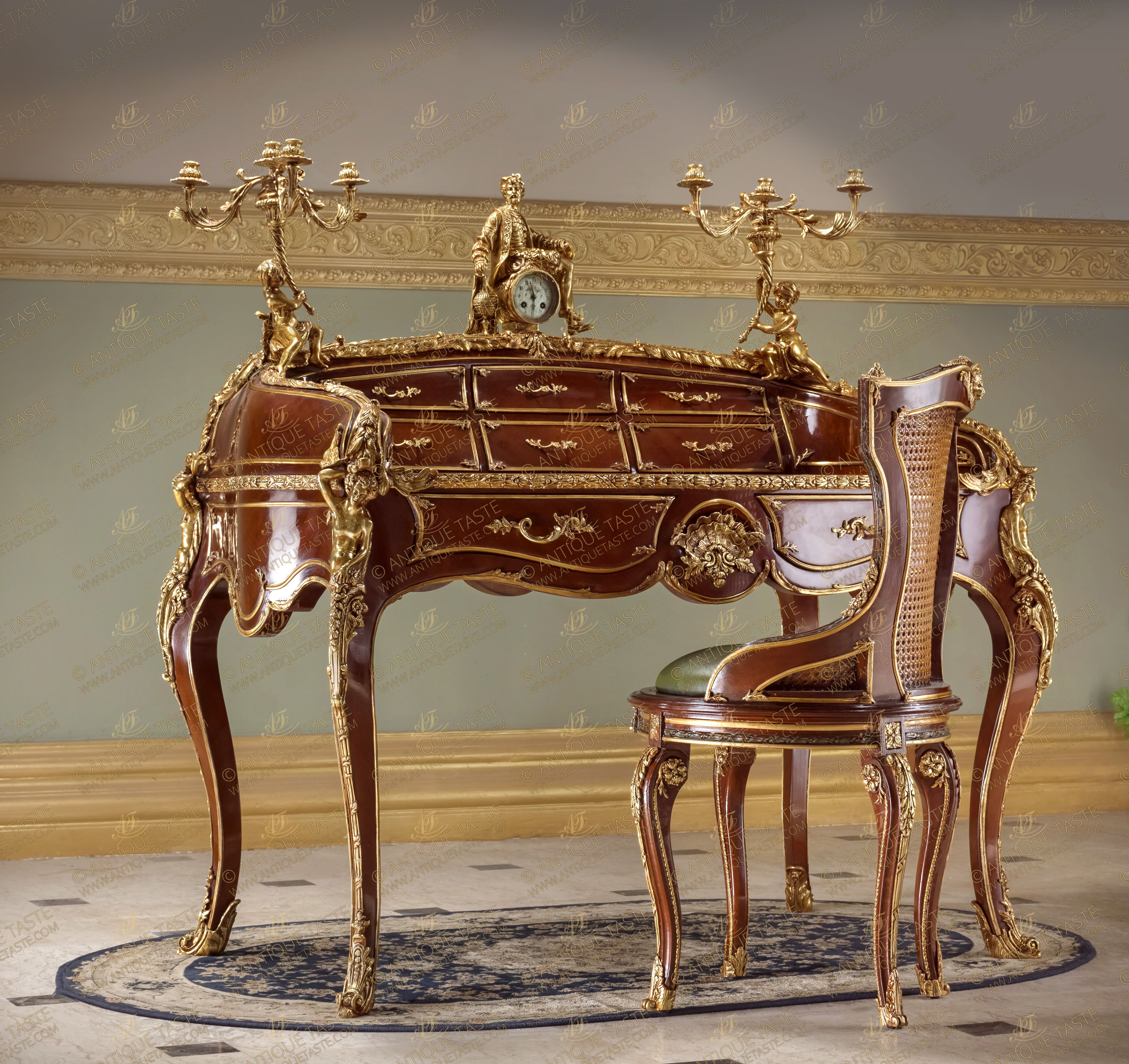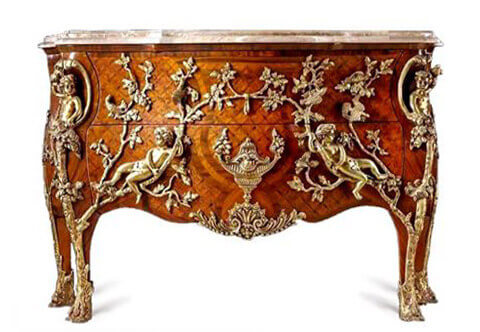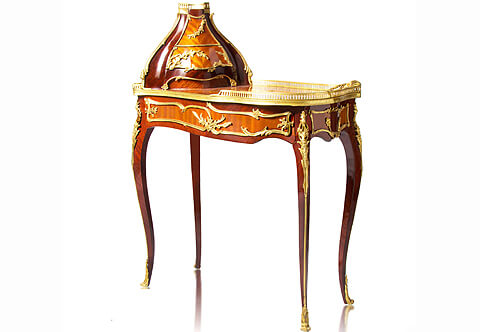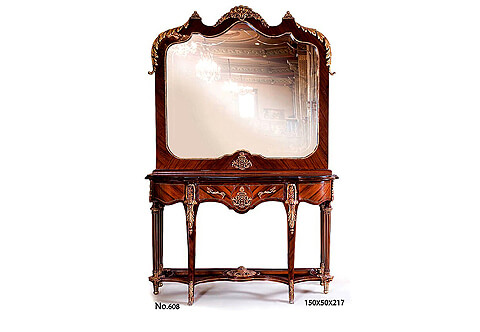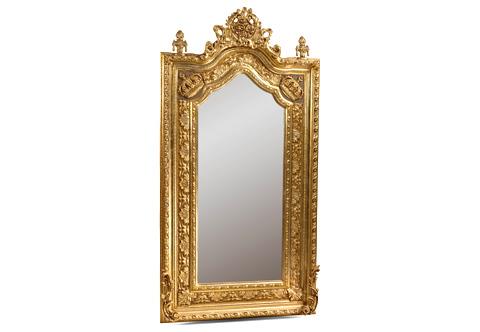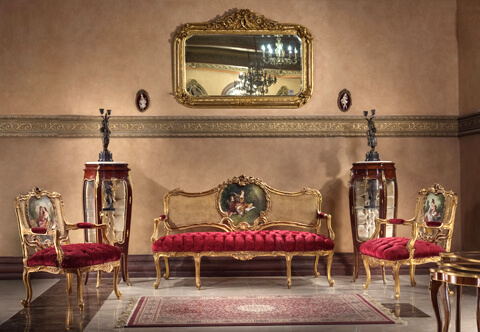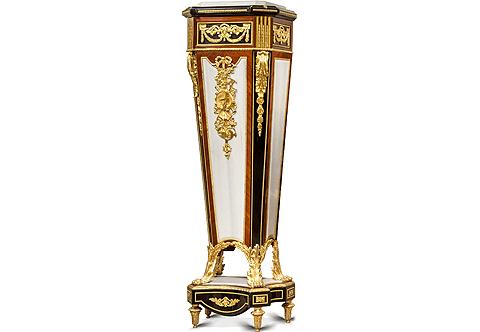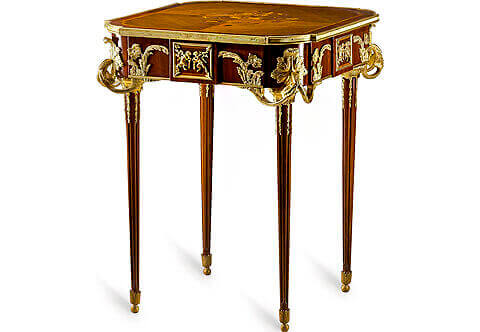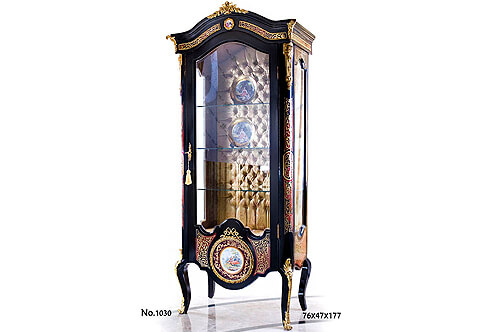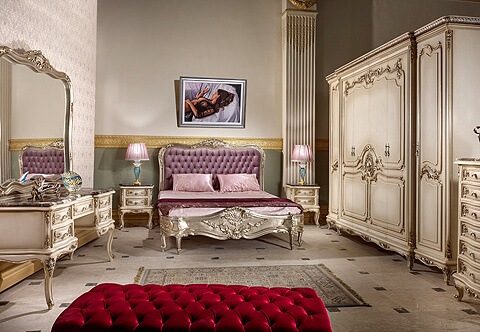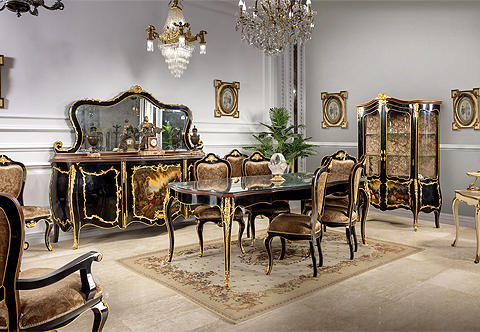French Louis XV Rococo style ormolu-mounted Royal Bureau de Dame; Ladies Secretary Desk after the model by François Linke and Théodore Millet
Ref#D-1961 | Description
We proudly present one of our exceptional exuberant pieces of art; A unique French Louis XV Rococo style ormolu-mounted veneer inlaid Rpyal Bureau de dame; Lady's Secretary writing Desk; The luxurious piece is inspired from the original models of François Linke and Théodore Millet Ladies Desk;
The upper structure is fitted with six ormolu mounted drawers surmounted by a finely chased central ormolu clock flanked by two putti holding four arms leafy candelabras; the whole upper structure is surmounted with artistically moulded blossoming acanthus leaves encardment connecting on each corner by a large male and female ormolu blossoming leafy scrolling espagnolettes extended on each elegant cabriole leg by hammered leafy bands connected to voluting acanthus-wrapped sabots;
The harmonious scalloped shaped apron ornamented by a central breath-taking large Rocaille style shell adorned with acanthus leaves flanked by two drawers with ormolu leafy handles. The whole bureau is decorated with delicate leafy ormolu filet in a satin and burnish finish continued all around the contour. The desk luxury chair is available per request.
Ref#D-1961
H:142 x W:130 x D:80cm
Louis XV Rococo Style | François Linke | Théodore Millet
François Linke
Francois Linke (1855-1946) was arguably the leading Parisian cabinetmaker of the Belle Epoque the glittering age of fashionable French society, whose influence was felt throughout the world.
Determined to outshine the competition at the Exhibition, Linke had set about creating the most ambitious pieces he could envisage, and more extravagant than had ever been displayed before. The items he exhibited marked a transition from the historicist interpretation of Louis XV and Louis XVI styles, an interpretation that was the mainstay of his nearest rivals, to something startlingly new and vital in its immediacy. Together with Leon Message he developed a new style for the 1900 Exhibition that paid homage to the Louis XV rococo in the fluidity of its approach, but an approach fused with the lively flowing lines of the contemporary and progressive 'art nouveau'.
This risky endeavour was a resounding success, and with his reputation established, La Maison Linke became the pre-eminent furniture house until outset of the Second World War. The technical brilliance of his work and the artistic change that it represented was never to be repeated. His showrooms expanded into prestigious premises in Paris, in the Place Vendome as well as the Faubourg St. Antoine where his workshop had been established. He embarked on many important commissions in the years up to the outbreak of the First World War, making and designing furniture for leading international industrialists and bankers.
After the 1914-1918 World War, Linke undertook the extraordinary commission to furnish the Ras al-Tin Palace in Alexandria for King Fuad of Egypt, possibly the largest single furniture commission ever conceived, eclipsing even Versailles. Linke flourished and remained active until the middle years of the 1930s and died in 1946.
Maison Millet
The House of Millet or Maison Millet was founded in 1853 by Theodore Millet in Paris. Millet was a producer of the finest meubles de luxe from 1853 until 1918, specializing in furnishings designed in the 18th-century taste, the firm was described as producing "meuble et bronze d'art, genre ancient et modern" (furniture and bronze art, ancient and modern styles).
The firm won many honors in a series of exhibitions in London and Paris, including the gold medal at the Paris Exhibition Universelle in 1889, the Grand Prix the following year, as well as three Diplomes d' Honneur and four gold medals.
The firm's greatest honor came in March 1902 when the curator of Versailles Palace authorized Millet to replace Queen Marie Antoinette's celebrated Grand cabinet a bijoux.

